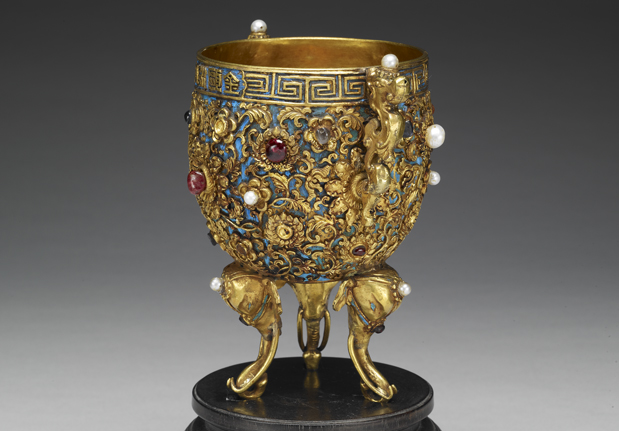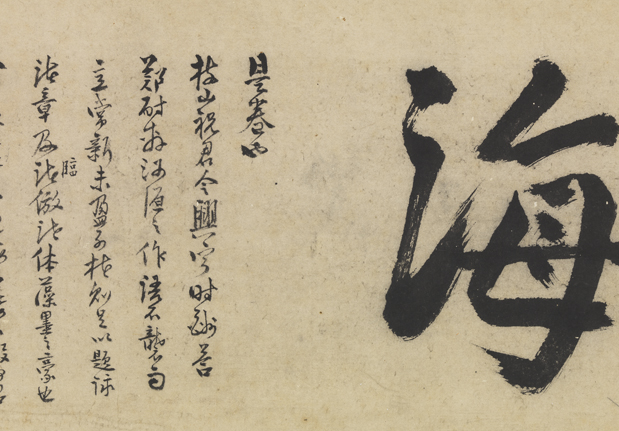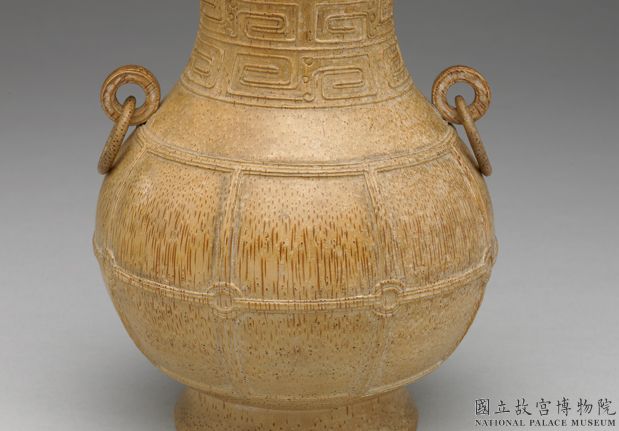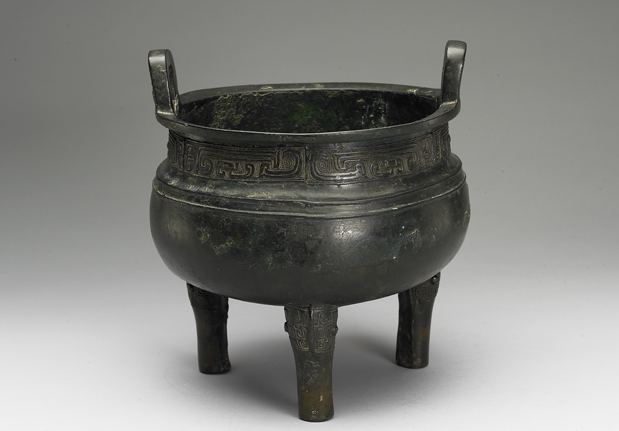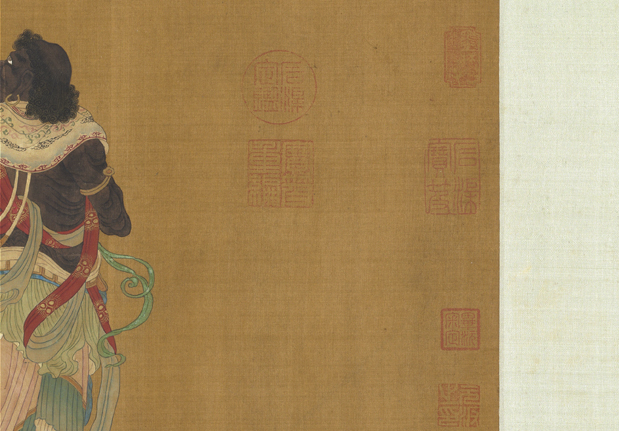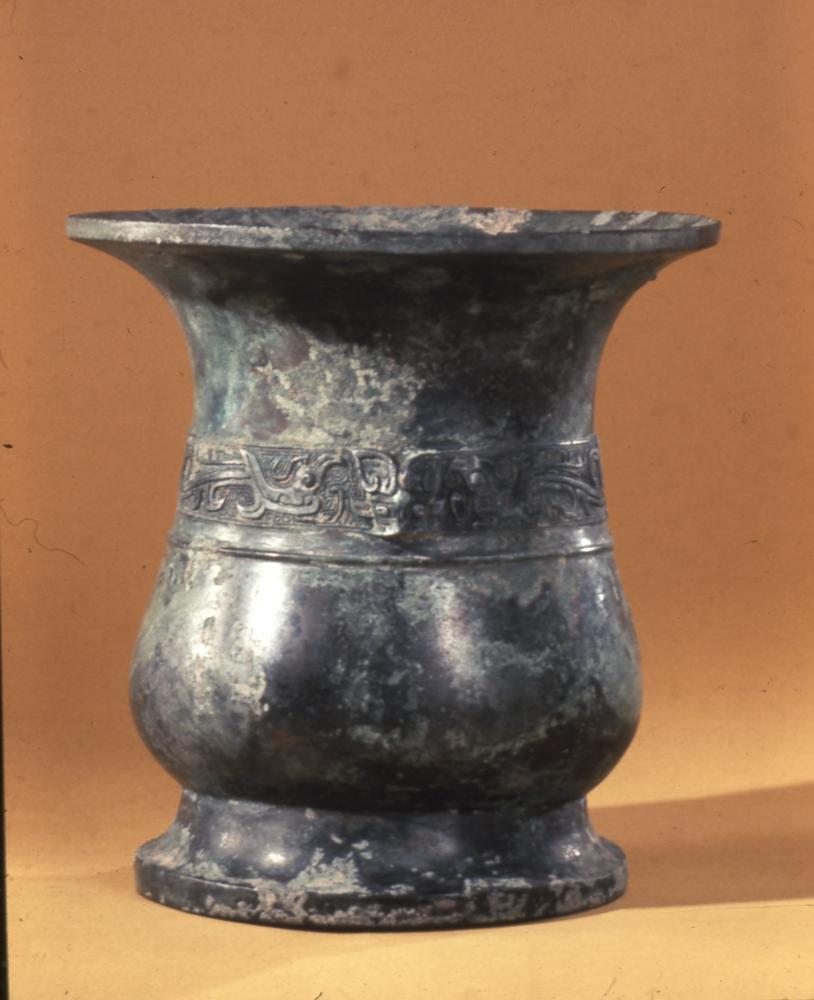Period:Yuan dynasty Production date:1330-1368 (circa)
Materials:porcelain
Technique:glazed, slipped, underglazed,
Subjects:fruit
Dimensions:Diameter: 2.20 inches Height: 5.50 centimetres
Description:
Small starfruit-shaped jar with two lugs at the neck, raised ribs and underglaze blue decoration. This globular jar has a flat base and a raised straight neck with two lugs, one of which is broken. Outside eight vertical ribs are applied, dividing the surface into sections, alternately filled with sketchily painted lingzhi sprays in underglaze blue. Impurities in the glaze show through as iron-brown spots.
IMG
![图片[1]-jar BM-Franks.3144-China Archive](https://chinaarchive.net/Yuan dynasty/Ceramics/mid_00263968_001.jpg)
Comments:Harrison-Hall, 2001:Made for export to south-east Asia, this jar was originally collected in Borneo in 1885 by Colonel Sir William Everett KCMG (1844-1908). He had a distinguished career in military intelligence and spent time in the Far and Near East, making generous donations of Oriental and ethnographic material to the British Museum. He entered the army at the age of twenty, was knighted in 1886 and became a colonel seven years later. Everett’s appointments included Vice-Consul in Erzeroum in 1879, Consul for Kurdistan 1882-8, Professor of Military Topography, Staff College, 1888, and Assistant Adjutant General for Intelligence in the War Office. Jars of similar form have also been found in the Philippines.The name lingzhi is given to the fruiting body of one or more species of fungi belonging to the family of Polyporaceae. They develop on the roots and trunks of trees and become woody and enduring, unlike mushrooms and toadstools. Lingzhi is considered a magical food which, when ingested, can confer eternal life on the consumer. Thus it is a symbol of longevity.
Materials:porcelain
Technique:glazed, slipped, underglazed,
Subjects:fruit
Dimensions:Diameter: 2.20 inches Height: 5.50 centimetres
Description:
Small starfruit-shaped jar with two lugs at the neck, raised ribs and underglaze blue decoration. This globular jar has a flat base and a raised straight neck with two lugs, one of which is broken. Outside eight vertical ribs are applied, dividing the surface into sections, alternately filled with sketchily painted lingzhi sprays in underglaze blue. Impurities in the glaze show through as iron-brown spots.
IMG
![图片[1]-jar BM-Franks.3144-China Archive](https://chinaarchive.net/Yuan dynasty/Ceramics/mid_00263968_001.jpg)
Comments:Harrison-Hall, 2001:Made for export to south-east Asia, this jar was originally collected in Borneo in 1885 by Colonel Sir William Everett KCMG (1844-1908). He had a distinguished career in military intelligence and spent time in the Far and Near East, making generous donations of Oriental and ethnographic material to the British Museum. He entered the army at the age of twenty, was knighted in 1886 and became a colonel seven years later. Everett’s appointments included Vice-Consul in Erzeroum in 1879, Consul for Kurdistan 1882-8, Professor of Military Topography, Staff College, 1888, and Assistant Adjutant General for Intelligence in the War Office. Jars of similar form have also been found in the Philippines.The name lingzhi is given to the fruiting body of one or more species of fungi belonging to the family of Polyporaceae. They develop on the roots and trunks of trees and become woody and enduring, unlike mushrooms and toadstools. Lingzhi is considered a magical food which, when ingested, can confer eternal life on the consumer. Thus it is a symbol of longevity.
© Copyright
The copyright of the article belongs to the author, please keep the original link for reprinting.
THE END
